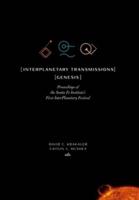Publisher's Synopsis
Numerical procedures formulated for the analysis of 3D jet mixing problems, as incorporated in the computer model, SCIP3D, are described. The overall methodology closely parallels that developed in the earlier 2D axisymmetric jet mixing model, SCIPVIS. SCIP3D integrates the 3D parabolized Navier-Stokes (PNS) jet mixing equations, cast in mapped cartesian or cylindrical coordinates, employing the explicit MacCormack Algorithm. A pressure split variant of this algorithm is employed in subsonic regions with a sublayer approximation utilized for treating the streamwise pressure component. SCIP3D contains both the ks and kW turbulence models, and employs a two component mixture approach to treat jet exhausts of arbitrary composition. Specialized grid procedures are used to adjust the grid growth in accordance with the growth of the jet, including a hybrid cartesian/cylindrical grid procedure for rectangular jets which moves the hybrid coordinate origin towards the flow origin as the jet transitions from a rectangular to circular shape. Numerous calculations are presented for rectangular mixing problems, as well as for a variety of basic unit problems exhibiting overall capabilities of SCIP3D. Wolf, D. E. and Sinha, N. and Dash, S. M. COMPUTER PROGRAMS; JET EXHAUST; JET MIXING FLOW; MATHEMATICAL MODELS; NAVIER-STOKES EQUATION; THREE DIMENSIONAL MODELS; ALGORITHMS; PLUMES; PRESSURE EFFECTS; SUBSONIC FLOW; TURBULENCE MODELS; TURBULENT JETS...












